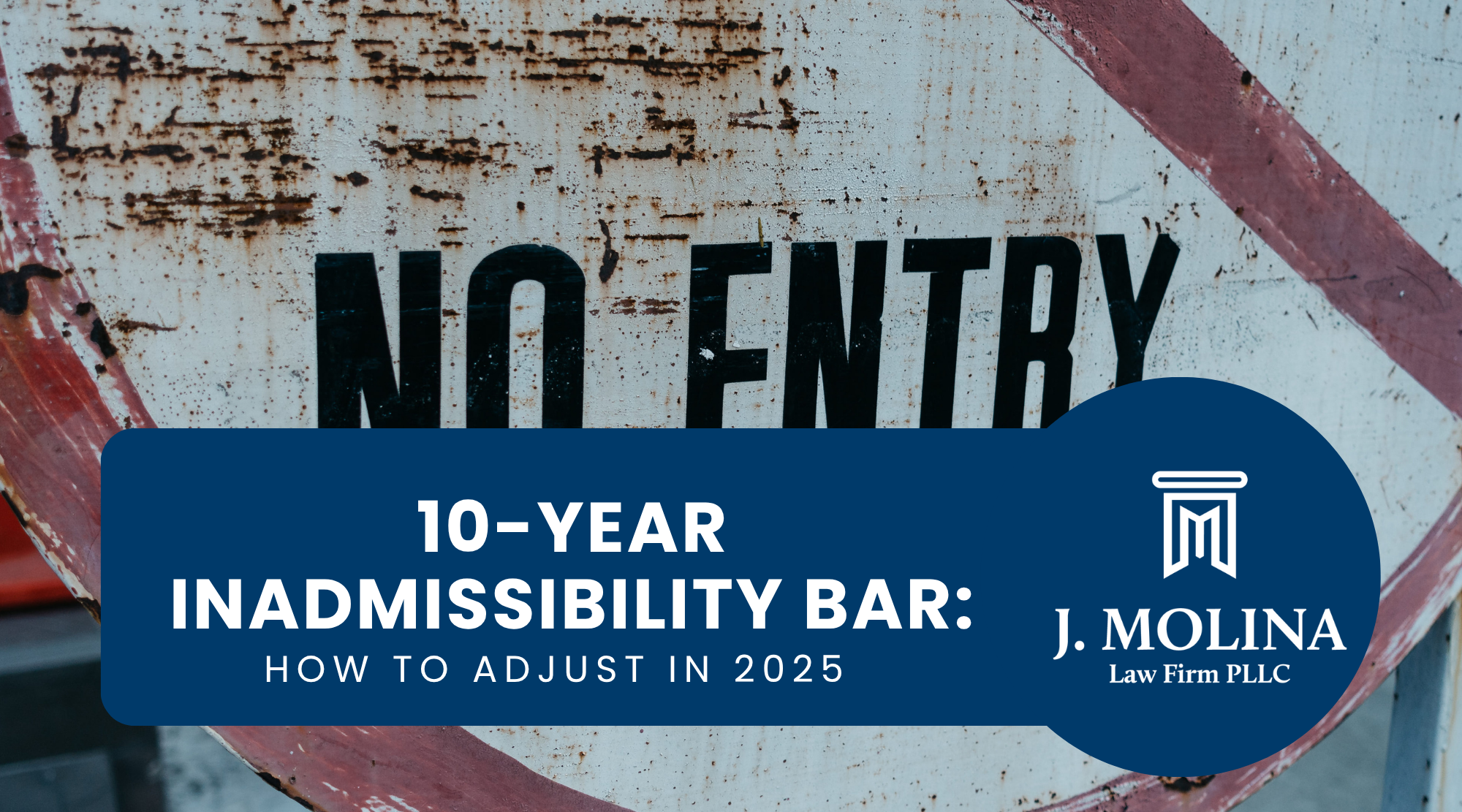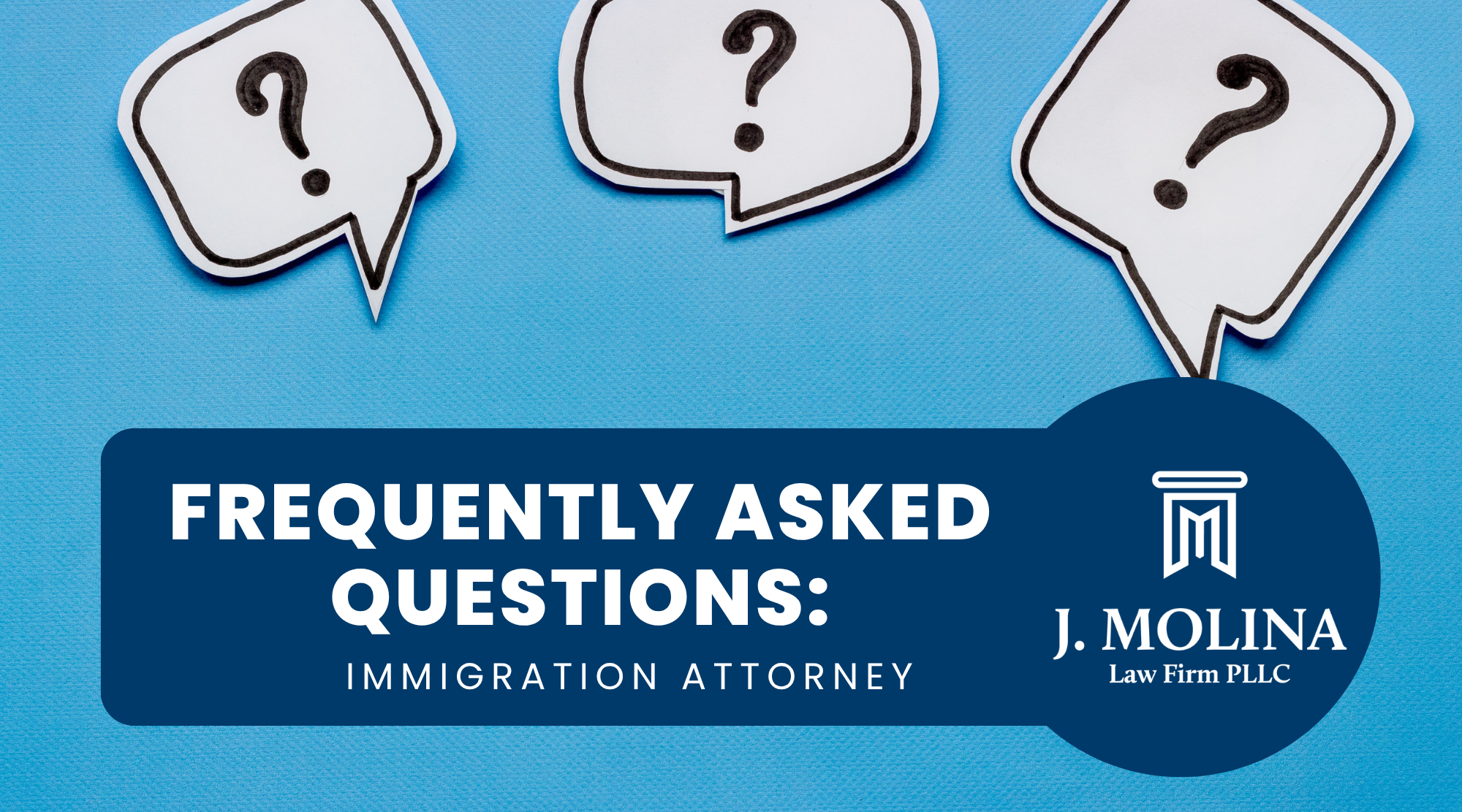If you’ve spent over a year in the U.S. without legal status and then left the country, you might be facing the 10-year inadmissibility bar—a rule that can block your path to legal residency. In 2025, changes in how this bar is interpreted could impact your ability to return or adjust status. Here’s what you need to know.
What Is the 10-Year Inadmissibility Bar?
The inadmissibility bar is a penalty under U.S. immigration law. If someone stays in the U.S. unlawfully for more than 180 days and then leaves, they face a 3-year bar. But if they remain unlawfully for over a year before leaving, they are barred from reentering the U.S. or adjusting status for 10 years.
It’s important to understand:
- Unlawful presence means staying in the U.S. without legal status (such as overstaying a visa or entering without inspection).
- Trying to return before the 10 years are up, especially without legal permission, may trigger a permanent bar, which is much harder to overcome.
Adjustment of Status in 2025 with a 10-Year Bar
In 2025, new legal interpretations give immigrants more clarity:
Policy Changes: Can You “Run the Clock” Inside the U.S.?
Recent updates suggest that, in some cases, the 10-year bar can begin and “run” even if the person is inside the U.S.—but only if they are lawfully present, such as after a legal reentry or parole. This is a complex area and usually only applies in specific scenarios backed by court rulings.
Still, the most reliable way to satisfy the bar is to stay outside the U.S. for the full 10 years.
Adjustment After the Bar Ends
Once the 10 years have passed, and if no other issues exist (like fraud or a prior removal order), you may become eligible to apply for a visa or adjust status, depending on your case.
Waiver Options and Exceptions
Some individuals may be eligible for a waiver, especially if they have close U.S. citizen or lawful permanent resident relatives:
- Form I-601 (Waiver of Grounds of Inadmissibility): You must show that your absence causes extreme hardship to your qualifying relative.
- §212(d)(3) Nonimmigrant Waiver: In rare cases, this allows temporary entry for business, medical, or humanitarian reasons.
If you’ve been deported or reentered unlawfully, you may also need Form I-212 (Permission to Reapply).
What You Can Do in 2025
- Review Your Immigration History: Confirm whether your past presence triggers the 10-year inadmissibility bar.
- Wait It Out (if necessary): If required, stay outside the U.S. for the full 10 years.
- Explore Waiver Options: If returning earlier, gather evidence to support a waiver application.
- Apply When Eligible: Once the bar is satisfied, you may pursue a visa or adjustment through a family or employment petition.
- Stay Informed: Immigration policies can shift. Always check USCIS updates or consult a legal expert.
Need Help Understanding Your Inadmissibility Bar?
Facing the 10-year bar can feel overwhelming—but you don’t have to face it alone. At J. Molina Law Firm, we help immigrants explore their options, apply for waivers, and fight for lawful status. Contact us today for a personalized consultation.



